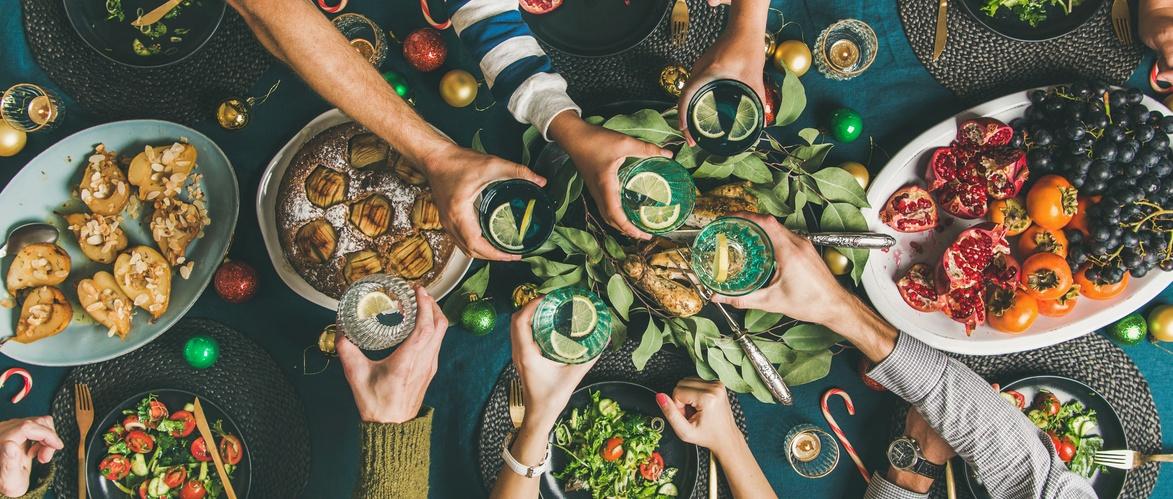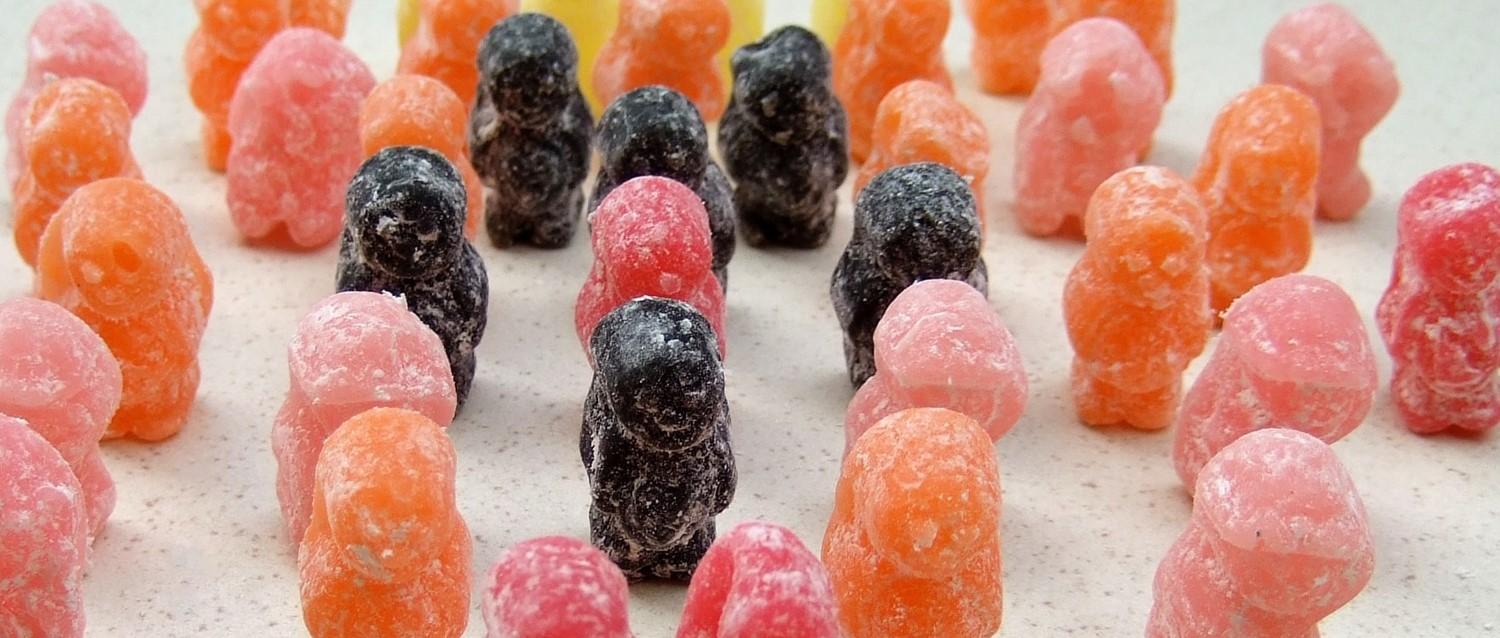
What to eat at Christmas if you have type 2 diabetes
Peer reviewed by Dr Krishna Vakharia, MRCGPLast updated by Victoria RawLast updated 15 Nov 2024
Meets Patient’s editorial guidelines
- DownloadDownload
- Share
- Language
- Discussion
If you're managing type 2 diabetes, you can still enjoy a lot of the delicious foods on offer during the festive season. It's possible to eat healthily, while indulging in Christmas treats.
In this article:
Continue reading below
Type 2 diabetes and Christmas
If you have type 2 diabetes, following a healthy diet is one of the most effective ways of managing your condition. This will help reduce your chance of developing complications - including cardiovascular disease, blindness, amputation, kidney disease and depression. However, keeping this up over Christmas day - as well as the festive celebrations that fill December - can feel daunting.
While it's true that many Christmas treats are high in sugar, refined carbs, saturated fats and salt, there's plenty of healthy festive food. By managing your portions and finding a balance between treating yourself and restraint, you can still enjoy your food this Christmas.
Azmina Govindji, registered dietitian and member of the Diabetes Research and Wellness Foundation (DRWF) editorial advisory board champions realistic goal setting over depriving yourself during the festive period.
"Trying to lose weight during the holidays is likely to be a self-defeating goal," she says. "Instead, strive to maintain your weight. Depriving yourself of festive foods, or feeling guilty when you do have them, isn't part of an empowering healthy eating strategy."
According to the National Institute for Health and Care Excellence (NICE), people with type 2 diabetes need to consider the best times to eat, how many carbohydrates to have per meal, and reducing alcohol intake. Your healthcare team should help to create the best diet plan for your needs.
Christmas food to avoid or limit with type 2 diabetes
Starchy and sugary carbs
When it comes to managing your diabetes over Christmas, knowing which festive treats greatly affect your blood sugar (glucose) management is important. Carbohydrates - both starchy and sugary - can cause your blood sugar to rise. These foods contain a surprisingly large amount of sugar.
This is particularly true of refined carbs - such as white bread, flour, or sugar - which can be found in many Christmas canapes like mince pies, breaded chicken, and sausage rolls.
Food that is high in salt
You'll also need to limit food that's high in salt. Too much salt can raise your blood pressure and increase your likelihood of heart disease and stroke. The charity Action on Salt warns that a Christmas dinner can contain more than 15 grams of salt, which is around three times the recommended daily maximum of 5 grams - around a teaspoon.
Checking food labels - as well as limiting your consumption of shop-bought processed foods - can significantly reduce your salt intake. These salty Christmas treats include crisps, sausage stuffing, salted peanuts, and shop-bought gravy.
Food that's high in fat
It's also important to maintain a healthy weight if you are living with type 2 diabetes, as your health can be affected if you are living with obesity or are overweight. A key factor in avoiding weight gain is limiting your intake of fatty foods - especially saturated fats and trans fatty acids. These can raise your blood sugar, your cholesterol and your blood pressure.
Saturated fats can be found in dairy foods such as cheese, cream and full fat milk, as well as fatty, processed meats such as bacon and sausages. Trans fats are sometimes present in highly processed treats - for example, cakes, biscuits, pastries, crackers and takeaways.
Continue reading below
Healthy Christmas food to embrace
While it's true that you need to manage your intake of many festive favourites carefully with type 2 diabetes, there's plenty of Christmas food that's healthy and delicious.
Govindji says: "Many traditional Christmas treats are nutritious foods, moderate in calories and rich in health-promoting vitamins, minerals and natural nutrients."
Foods that are high in fibre and protein, and also contain low-glycaemic-index sources of carbohydrate - such as fruit, vegetables, whole grains and pulses - are recommended by NICE for managing type 2 diabetes. This diet can keep blood sugar, cholesterol, and blood pressure at healthier levels, which in turn reduces your chances of connected conditions.
Govindji says that Christmas day could even be the perfect opportunity to reach your daily five portions of fruit and vegetables without having to try too hard. The DRWF news page is a useful source of information for people managing diabetes.
Here Govindji has highlighted several popular Christmas foods:
Roast turkey - rich in protein and low in fat.
Smoked salmon - high-protein, low-fat and rich in cardio-protective omega-3 fatty acids, but eat in moderation due to high salt content.
Potatoes - source of vitamin C and other nutrients. Roast in spray oil rather than butter or fat to reduce saturated fats and leave the skin on for some extra fibre.
Carrots - source of vitamins and fibre.
Brussels sprouts - source of vitamins and fibre.
Unsalted nuts - source of unsaturated oils, fibre and the antioxidant vitamin E.
Satsumas - source of vitamins.
Christmas pudding - source of iron, fibre, and potassium. Limit how much you eat, as this dessert is also high in added sugars and saturated fat.
Diabetes UK also provides resources to help you plan a healthier Christmas, including several festive, healthy recipes.
Other tactics to help you eat well at Christmas
Knowing what Christmas food to embrace and what to limit will empower you to make healthier choices throughout the festive season. Being careful of portion sizes is also important for avoiding weight gain.
Other tactics can make your Christmas diet goals more effective and easier to maintain. Remember, it's okay to enjoy the odd high-calorie treat.
Following these rules can help you to stay in control:
Stick to smaller portions.
Eat slowly and chew more - this helps you to feel fuller.
Balance out any less healthy eating by eating better at other times.
Fill up most of your plate with healthier options - such as vegetables.
Consider healthy alternatives - for example, natural yoghurt instead of double cream.
Enjoy every bite - it's okay to enjoy yourself at Christmas, and a little indulgence can help you stick to your long-term diet goals.
Tips for eating out over Christmas
You may find yourself attending a few Christmas dinners with friends, family, or work colleagues over December. Eating out can limit your control over what you eat, and offer temptation.
Diabetes UK has practical advice to help you choose healthier options:
Before attending, check if the restaurant provides nutritional information online - you can plan ahead and learn which options are healthier.
Be the first to order - to avoid being swayed by other people's choices.
Consider ordering a starter as a main meal if you have a smaller appetite.
Order meals that are high in protein - such as lean meat, egg, fish, or beans.
Only order dessert after you've eaten your main meal - you may find you're too full for one.
If your meal is delayed, and your blood sugar levels are in danger of dropping too low, ask if there's a bread roll to tide you over.
If possible, add extra vegetables to your plate - filling up on vegetables is a low-calorie, nutritious option.
Continue reading below
Type 2 diabetes, Christmas, and alcohol
There is usually a lot of alcohol at Christmas celebrations, and everyone should be wary not to have more than the recommended limit of 14 units per week. If you have type 2 diabetes, you can usually enjoy drinking in moderation - however, you need to be careful.
If you treat your diabetes with medicines - such as insulin or sulfonylureas - you'll be aware that alcohol interferes with your blood sugar levels and can make you more likely to have a hypo (hypoglycaemia) where your blood sugar drops too low. Alcohol reduces your liver's ability to store sugar, stopping recovery when your blood sugar is dropping. If you enjoy a drink at Christmas, choose drinks that have lower sugar levels.
Alcoholic drinks with high sugar content include:
Liqueurs - cream liqueurs - for example, Baileys are also high in fat.
Cocktails made with fruit juice.
Sweet wines.
Sugary spirit mixers - such as fizzy drinks.
Sherries.
Beers, ales, and ciders - these contain carbs which will increase your blood sugar levels initially.
Diabetes UK says to be careful with low-sugar beers and cider - sometimes called diabetic drinks. While they have less sugar, there's often a higher alcohol content. On the other hand, low-alcohol wines usually have more sugar, and should also be drunk with caution.
If you do enjoy a drink during the festive season, you can better manage your blood sugar by following these recommendations:
Stick to spirits, dry wines, and Prosecco - they're lower in carbs and sugar.
Use spirit mixers - such as tonic water, with no added sugar.
Don't drink on an empty stomach.
Have a pint of water before bed.
Eat breakfast the following day, and check your blood sugar levels if you have a meter - your chance of having a hypo can last up to 24 hours after drinking.
Patient picks for Type 2 diabetes

Diabetes
Slowdown in type 2 diabetes cases
Some countries have seen a fall in new cases of type 2 diabetes according to a new review of the current evidence.
by Milly Evans

Diabetes
Why type 2 diabetes check-ups are so important
More than 4.9 million people are currently living with diabetes in the UK, around 90% of them with type 2. However, the disruption caused by the pandemic has led many people to stop getting routine type 2 diabetes check-ups - putting them at risk of serious health complications.
by Dr Sarah Jarvis MBE, FRCGP
Continue reading below
Article history
The information on this page is peer reviewed by qualified clinicians.
Next review due: 15 Nov 2024
15 Nov 2024 | Latest version
4 Dec 2021 | Originally published
Authored by:
Amberley Davis

Ask, share, connect.
Browse discussions, ask questions, and share experiences across hundreds of health topics.

Feeling unwell?
Assess your symptoms online for free